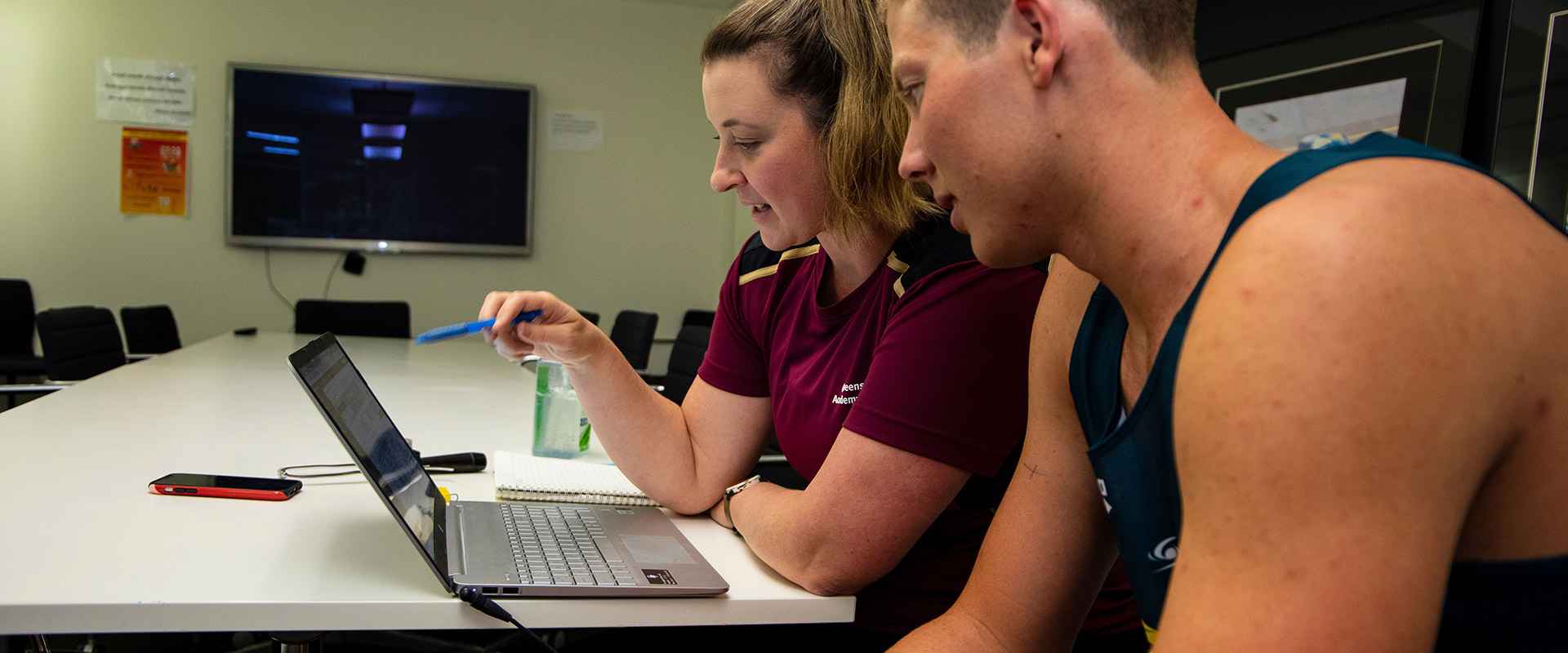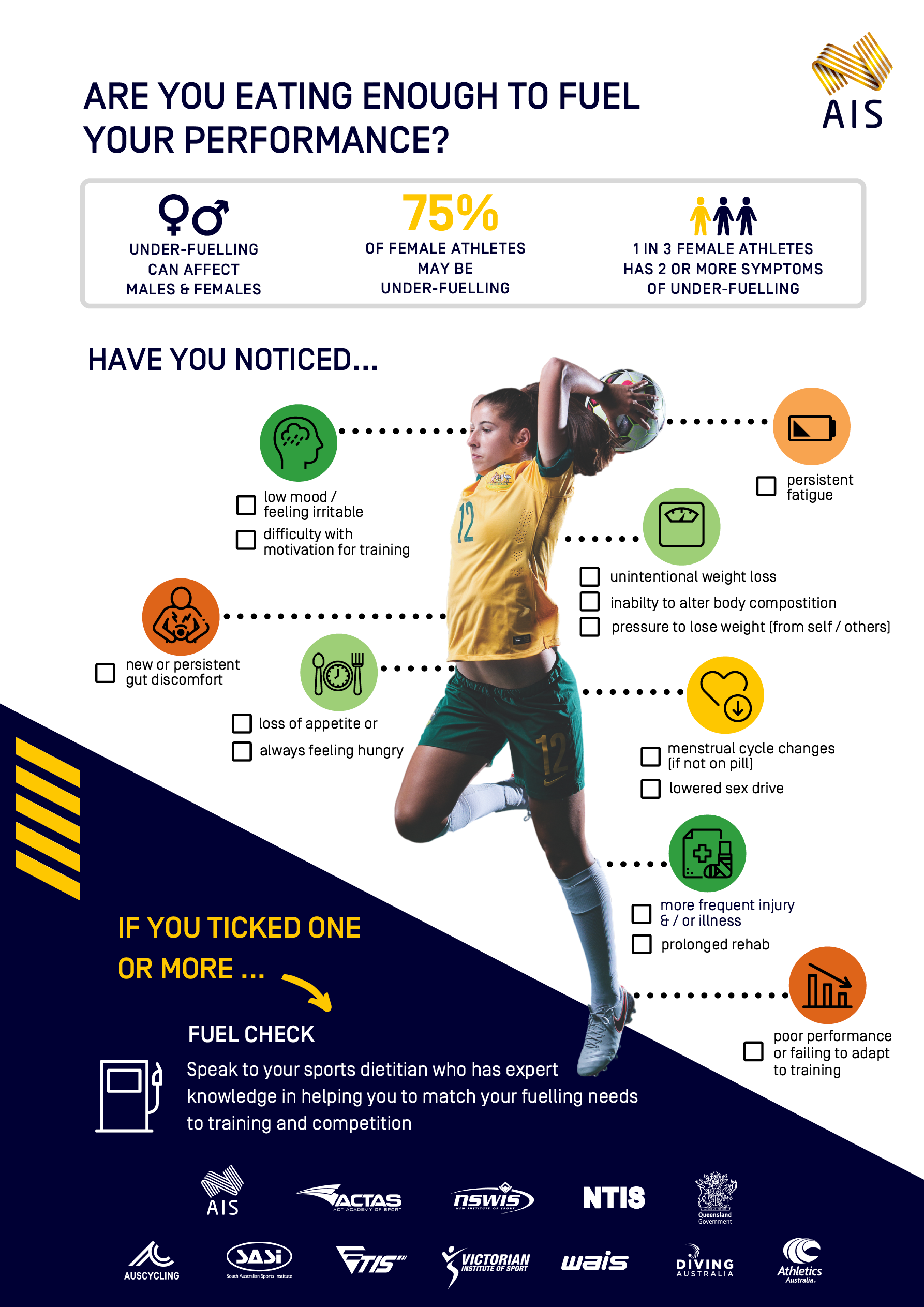


Queensland Academy of Sport


Meal frequency
Eat regularly with nourishing meals and snacks about every 2–3 hours.


Fruit and vegetables
Your plate should always look colourful! Aim for 2 serves of fruit and 5 vegetables every day.


Hydration
Carry a water bottle with you wherever you go as hydration is key to performance.


Red meat
Red meat contains protein and iron. Include red meat 2–3 times per week.


Get involved!
Help your parents cook and even tag along to do the shopping. This will help you learn important skills that will set you up later on in life.


Expand your repertoire
Try new recipes and experience new flavours! Check out the websites below for loads of delicious recipes.


| Nutritionist | Dietitian | |
| Aim of profession | Often work at a community, organisation and population level, providing information and advice about foods to promote health and food sustainability. They may also work with healthy individuals seeking to improve general health well-being vs individuals with medical or complex conditions requiring nutrition therapy. | Dietetics is a specialisation on top of nutrition studies. As such, dietitians can work in any of the areas that nutritionists work but, additionally, they provide nutritional advice for treatment of diseases and conditions to optimise health.
A sports dietitian provides individual and performance focused, nutrition plans for athletes.
|
| Accrediting body | There is no national industry authority governing nutritionists. | Dietitians Australia
Sports Dietitians Australia |
| Level of education |
Nutritionist courses can vary in length and quality, ranging from university degrees to TAFE courses. |
Bachelor’s and/or Master’s degree 4+yrs of study at university Accredited Practising Dietitians and Accredited Sports Dietitians commit to ongoing training and education. |
FACT OR FICTION?
There are many unreliable sources of nutritional information on social media and in magazines so we suggest that you stick to the qualified specialists whom use an evidence-based approach to healthy eating for active individuals.
Use this map to locate an Accredited Sports Dietitian near you!


Have a think about what activities require energy…
I bet you guessed gym, running, walking to school or even swimming, but did you think about breathing, laughing, digestion and growth? That is a lot of energy expended by the body due to various tasks!
Since our bodies expend energy from many tasks during a day it can sometimes be difficult to judge how much food and fluid our bodies really need to function and perform well. Furthermore, as an adolescent athlete, you have unique nutritional requirements due to the demands of not only training and competition but also the demands of growth and development!
It can be helpful to write down total weekly activities so you can appropriately plan your energy intake to match. Sports Dietitian Australia (SDA) recommends that adolescent athletes have regular amounts of high-quality carbohydrates and protein across the day, especially straight after training. If you do not replace enough energy to account for all your daily activities, then you could be in a state of low energy availability.
If there is a mis-match in dietary energy intake (e.g., food consumption) and the energy expended (e.g., exercise, riding to school, growth) then you may experience some of the below signs of low energy availability:


Low energy availability over an extended period of time can lead to a syndrome called Relative Energy Deficiency in Sport (RED-S).
Relative Energy Deficiency in Sport (RED-S) is a syndrome that can negatively affect the health and performance of athletes. The underlying cause of RED-S is an inadequacy of energy to support a range of body functions.
In 2014, an expert panel convened by the International Olympic Committee published a consensus statement in a research journal to provide guidelines on RED-S in sport. If you would like to read more, we have provided this article HERE.
RED-S can affect many different areas of the body such as the immune system, gut, bones, blood and reproductive system. However, it doesn’t mean all of them have to be affected at once, sometimes only one or two areas may not be functioning optimally.
It is important to know that RED-S occurs in both female and male athletes!
In female athletes, the menstrual cycle is a useful tool for detecting RED-S and is one reason why menstrual cycle tracking is so important.
If you observe any signs or symptoms, please talk to your medical professional.
It is important for all athletes, but particularly those that are growing and developing to meet their nutritional needs through nourishing whole foods and fluids. It most cases, supplements are not necessary for developing athletes. An Accredited Sports Dietitian is able to assess the needs for use of sports supplements.
Guiding principles for AIS Sports Supplements Framework:
In fact, there are a lot of supplements that do not have sufficient evidence to suggest it is effective in improving sports performance!
The AIS uses the ABCD Classification system. This system ranks sports foods and supplement ingredients into four groups according to scientific evidence and other practical considerations that determine whether a product is safe, permitted and effective in improving sports performance.


